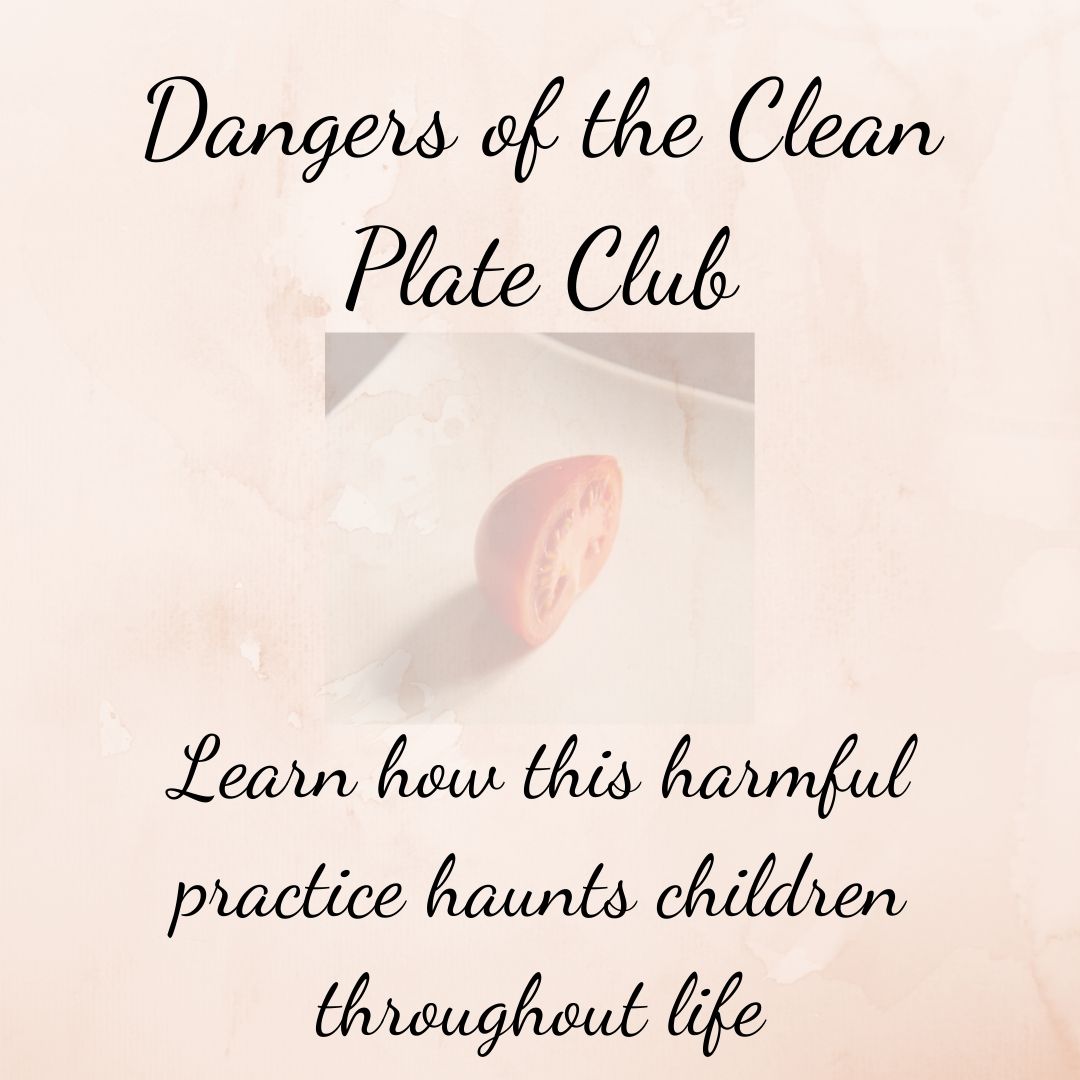Raising children is tough. Parenting seems tantamount to constant worry. Worry about our children’s nutrition seems to trump all other concerns though when parenting a picky eater. However, I want to offer some encouragement. True malnutrition (undernutrition), in the general population, is rare. Even in children it is rare. I’m not saying it does not exist, but it is usually brought on by illness, chronic disease, or developmental delays that impact eating.
However, parents can make very serious mistakes with a child’s nutrition, but it has nothing to do with WHAT a child is eating, but the relationship with food that the parent creates. The way we raise our children in regards to attitudes and beliefs about food and eating has a far greater long term impact on their health than any vegetable ever will.
Normal Growth
As summer approached this year, Little Bit’s appetite began to increase – dramatically. I have always allowed her to eat to her hunger and fullness cues. Growth requires A LOT of energy. In fact, the amount of energy (calories) required for growth spurts during childhood often exceed a child’s ability to eat. The body takes care of this by increasing appetite in the days/weeks leading up to a growth spurt. Children WILL gain weight in response to this increased hunger. Then growth will accelerate. Hunger will plummet. The extra stored energy (body fat) will be used to fuel this rapid growth. Once that growth spurt is done a child’s weight and height will balance out to normal for his/her genetics.
In a nutshell, kids grow out and then grow up. Personally, I have learned to recognize this increase in appetite and development of a little pudgy tummy as time to buy new clothes!
My Ah-Ha Moment
Little Bit’s increased appetite had been going on for a couple of weeks, as I watched her walk down the stairs. I noticed that her little tummy was beginning to stretch the waist band of her pants. My mind immediately went to what another health professional would say about her weight if they happened to see her during this time. I would hear it was time to start watching her fat intake. Time to make sure she only drank skim milk. Time to closely limit screen time and increase physical activity. Though I knew what other professionals would say, I did none of these things in response to her weight gain. I continued to feed my child according to her hunger cues, and as healthfully as possible with her finicky palate. I knew that her body was preparing for a growth spurt.
My next thought was my ah-ha moment – If humans are born with an ability to meet calorie needs based on hunger and fullness cues, than over eating must be a learned behavior.
I immediately began to wonder, if this is true, then what are we doing as parents to teach this behavior and how do we stop?
Break the Mold
Many parents today were initiated into the Clean Plate Club at a young age. I believe this may be one of the single greatest mistakes we can make with our kids’ nutrition. Now I’m not throwing anybody’s parents under the bus. They did the best they could. Many of our parents were raised by children of the Great Depression. A time in our history when food was scarce and hunger was abundant. To waste food seemed almost criminal. The Clean Plate Club, however, teaches kids that is it wrong to feel full before all the food on the plate is gone. It is teaching our children to eat beyond natural fullness cues. Teaching them how to overeat.
Ways to Help Kids Eat Recognize Hunger and Fullness Cues
Tiny Portions
I serve Little Bit tiny portions at mealtime. But she knows that she can ask for as many servings as she wants until she is full. My mom trick though, is that each additional serving is also tiny. During the course of a meal she may ask for food three or more times, but that is by design. I let her decide when she is full. If that happens before her plate is empty, I am not left throwing away large amounts of food. At most, it is a bite or two, which doesn’t cause me any wasteful guilt.
This is a pic of a mac ‘n cheese serving, with milk. You can see, it is not much.

Hunger and Fullness Recognized
As painfully slow as the process may be, let children eat at a leisurely pace. Also, turn off all devices (tv, phones, ipads, etc). Early fullness cues may be subtle, and therefore easily missed by distracted kids. Now before it gets all stones and glass houses up in here, let me tell you, my kid uses electronics. I just limit access during home meals. Eating out is an entirely different story….so no judgment from anyone here, ok?
The key is creating an environment that allows a child to be fully aware and focused on the meal. This is also a good tip for parents. The hunger and fullness cues of childhood are still present in adults, just sometimes a bit muted. Tuning into these cues is imperative in longterm weight maintenance for everyone.
Why is food being requested?
How many other parents felt like every time you turned around your kid was whining for a snack during summer break? Yep. I’m right there with ya. I used it as a teaching time. We talked about eating out boredom. I would validate her feelings, after all, boredom eating is common, but then we talked about why it isn’t a good idea for our bodies to eat out of boredom. These conversations can get sticky though. I’m extremely cautious to avoid telling her that we don’t eat X because it will make us fat. We instead talk about how eating when we aren’t really hungry is not healthy for our bodies, and then we talk about other activities we can do at the moment.
On the flip side, this can be a great opportunity to teach our children not only to recognize true hunger, but to eat in response. People rarely eat the same number of calories each day. The body rarely burns the same number of calories each day. These variations are why we have hunger cues. No matter our age, our bodies will signal its need for energy through hunger. Teaching our children to recognize these cues, and heed appropriately, it teaching them to trust their body. I cannot stress how vital this will be in helping a child maintain a normal, and healthy body weight throughout life.
What does the belly say?
This always reminds me of a YouTube video that went viral a few years ago. Little Bit knows the video well, but in this case we are discussing the belly telling the head whether it is hungry for full. It takes 15-20 minutes for the hunger cues to be fully realized by the brain. This is the same for kids and adults.
Breakfast seems to be the time Little Bit struggles the most the recognize her fullness. Our morning routine consists of breakfast (without electronics), get dressed for preschool, brush teeth and hair, and make her bed. I employ the same technique with breakfast as I do with other meals, very small portions, but she can ask for more. On occasion, she will ask for more servings than is typical. I’m accustomed to honoring her hunger, so I usually provide more food. However, there have been a few days that caused me pause. As mothers, we know our children well, and there was something about her request that caused me to wonder if she was truly hungry or still too sleepy to know recognize her fullness. I told her I thought it would be a good idea for us to take a break from eating and get dressed. I explained to her about the time it takes for the tummy to tell the brain that it is full. Leaving her plate on the counter, ready for another serving, we headed upstairs. She dressed, made the bed, and then looked at me and said, “Mom, my tummy is telling me it is full. I don’t want anymore food.” My suspicion that she was struggling to recognize her fullness cue was correct. However, I was also fully prepared to serve more breakfast if her response had been different.
Keep required tastes small
I require that Little Bit take 1-3 bites of a new food. However, these bites are extremely small. In the image below you see my definition of a small bite.

Did you even know it is possible to cut a cherry into this many pieces? (lol)
The point of the required bite is to help Little Bit learn to accept new foods. It is not about nutrition. I intentionally keep the bites to a simple taste. I never want it to be so large that it causes her to overeat. If you follow me on Instagram (www.instagram.com/authenticnutritionofcharleston) you know that I’ve had success with this technique (though it is a tough road).
Creating Healthy Relationships with Food
I am coming to the realization that one of my most important goals with Little Bit’s nutrition is to guide her in developing a health relationship with food and eating. My support of her hunger and fullness cues gives her confidence to trust her body. It provides her confidence to know when she needs food for fuel and to respect that need. There are many aspects of a healthy food and eating relationship. This is only one. However, knowing the role this one plays in long term healthy body weight maintenance has given me motivation to make it a top priority in my parenting.




